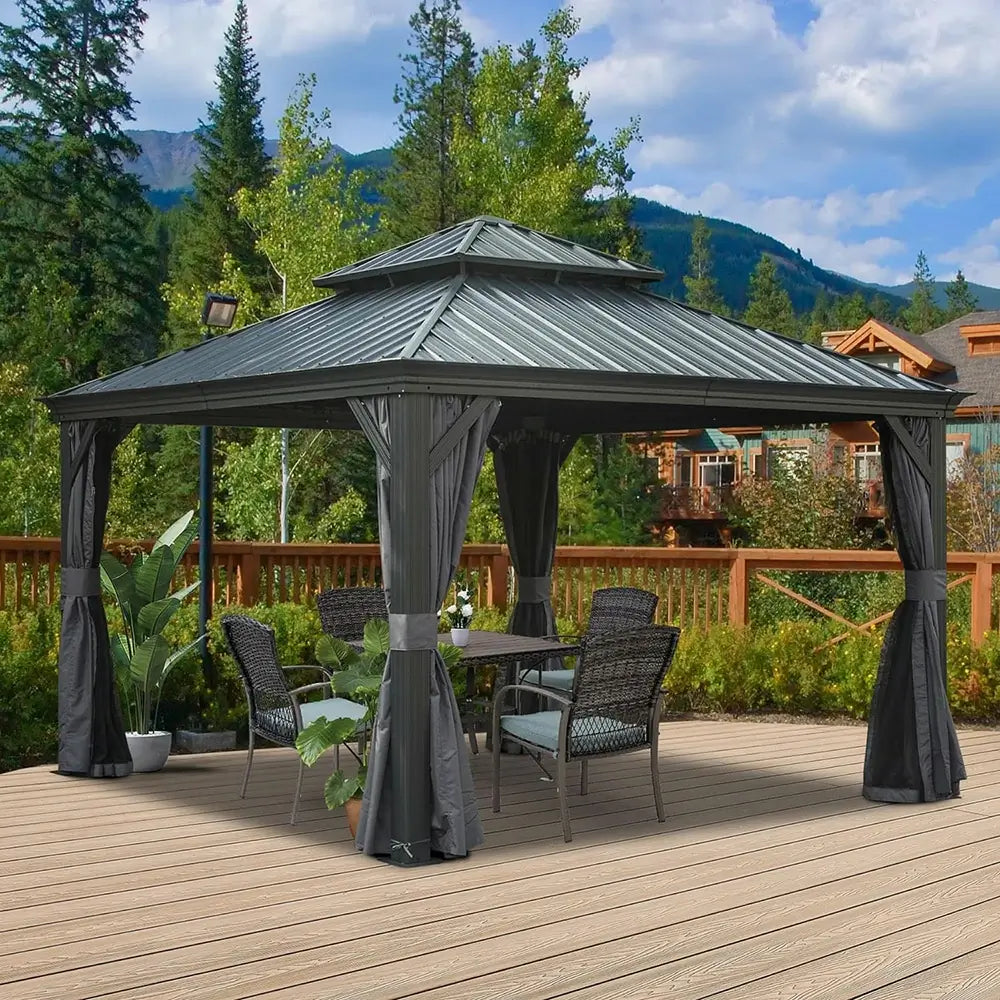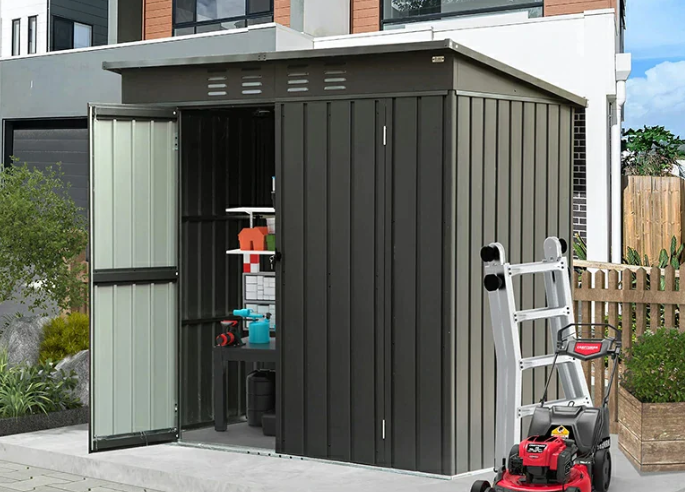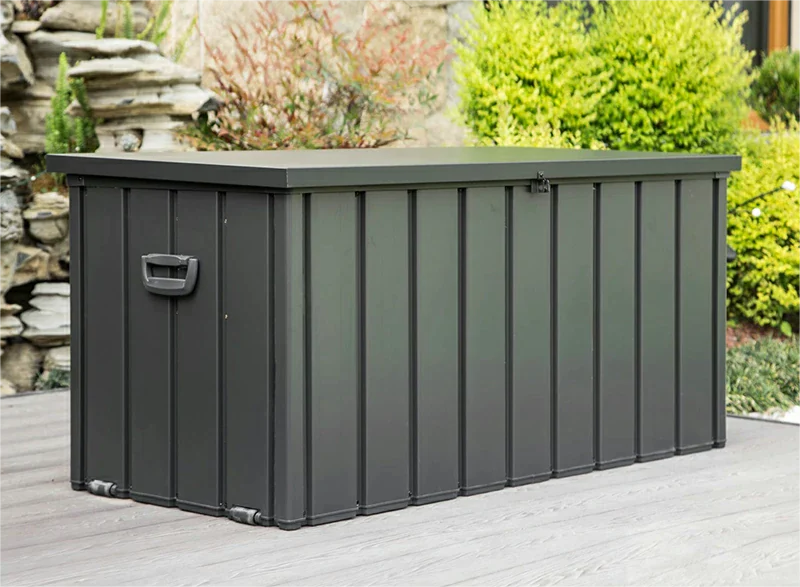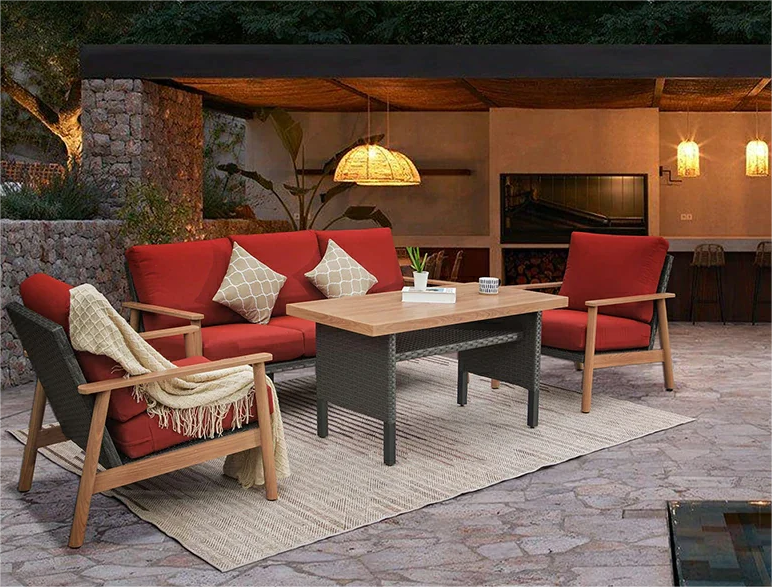Storing your bicycles in a shed is an excellent choice if you have them in your garden or backyard. The ideal bike shed is secure, built to withstand the elements, and convenient for daily use.
There's a plethora of options out there! And, as always, I'm here to help you navigate through the process to pick the perfect one for you.
Firstly, consider the size. You need to decide where it will be placed in your garden or backyard. How much room do you have? And crucially, how many bicycles do you need to accommodate?
Next, think about the material. What aesthetic are you aiming for? What's your budget? And what level of security, longevity, and upkeep are you looking for?
Lastly, it's time to decide on a specific shed that meets your needs and aligns with my suggestions!
Step 1: What size bike shed do you need?

How many bikes will it store?
When planning to purchase or build a shed specifically for storing bikes, it's essential to consider the space each bike will require. The size of the shed you need depends on the number of bikes you intend to store and potentially other items alongside them. Here's a quick summary of shed sizes based on the number of average-sized adult bikes:
- 1 bike needs a 6' x 2' shed
- 2 bikes need a 6' x 3' shed
- 3 bikes needs a 6' x 4' shed (or sometimes 6' x 3')
- 4 bikes needs a 6' x 5' shed (or sometimes 6' x 4')
- 5 bikes need a 6' x 5' shed
Remember, these figures serve as a basic guide. Your bicycle might be larger, equipped with a child seat, or smaller, or perhaps you're looking to store children's bikes.
The most reliable method is to measure your bicycles and any additional items you wish to store in the shed.
My advice? Err on the side of caution. Opt for a shed that's spacious and user-friendly. Overcrowding your storage space can lead to frustration and inconvenience, making it difficult to access your belongings.
How will I access the bikes?
And keep in mind, it's not solely about whether they can fit inside. How you place them in and take them out matters too!
In an ideal storage unit, each bicycle should be easily added or removed without causing any disruption to the other bicycles already in place.
This implies that the bikes should move in a forward or backward direction rather than sideways. Regrettably, there aren't many bike storage sheds that offer this feature!
If some of your bicycles are rarely used, this may not be a major concern. They can be placed towards the rear. However, if you have multiple bicycles that are frequently utilized by different individuals, then it's worthwhile to search for a shed that allows for forward access.
Location, Location, Location (where will it go?)
Undoubtedly, the essence of selecting a repository's domicile extends beyond mere storage considerations. It encompasses the strategic placement of such a structure. Constraints on dimensions may arise from the allocated terrain's expanse or potential obstructions dictated by adjacent barriers or the imperative to conform to visual harmony. Furthermore, regulatory mandates on construction may impose additional limitations.
A prerequisite for the chosen locale is a terrain that is both arid and level, ensuring not just adequate accommodation for the repository itself but also facilitating unencumbered access and the operation of its portals.
Location and Security
Security quandaries indeed pervade the placement of a storage edifice within your domicile's anterior garden or courtyard, rendering it susceptible to the prying eyes of passersby, in stark contrast to its concealment at the domicile's rear, which offers a veil of obscurity.
Yet, it is paramount that this storage edifice remains not ensconced from your vigilant gaze. A portal to this structure, under the surveillance from your abode, deters malefactors more effectively than one shrouded in seclusion, offering them the liberty to tamper undetected.
Similarly, structures in proximity to your abode stand as bastions of safety, for the malefactor harbors apprehension that their clandestine endeavors might rouse your attention (particularly if an alarm system is integrated within the edifice).
It is my counsel to situate the storage structure behind the domicile, shielded from the thoroughfare and the scrutiny of itinerants, yet within a stone's throw from the rear of the domicile, ensuring the doors remain within the purview of your posterior casements.
Acknowledging that such an ideal placement may not be feasible for all, subsequent discourse will explore additional fortification strategies to mitigate the peril aforementioned.
Step 2: What should the bike shed be made of?

In the realm of selecting materials for your storage edifice, you are presented with a trio of options: synthetic polymers (resin or vinyl), metallic elements, or lumber. Each material boasts its unique set of merits and demerits.
Nonetheless, it is imperative to acknowledge that these inherent characteristics can be significantly amplified or diminished based on the craftsmanship and quality of the shed you opt for.
Wooden Bike Storage Sheds
Historically, wood has been the go-to material for constructing sheds ever since the concept of sheds came into existence.
Firstly, wood is an affordable, durable, and user-friendly material that naturally complements the aesthetic of any garden.
However, it's worth noting that wooden sheds require considerable upkeep. The wood must retreat every few years to maintain its condition, and the roof will eventually need re-felting.
Preventative measures must be taken to deter pests such as rodents and insects and to prevent rot, which can compromise the shed's security and longevity.
It's critical to acknowledge that the initial security offered by most wooden bike sheds is relatively low. Fortunately, enhancing security is a straightforward task. When selecting a wooden bike shed, ensure the wood planks are at least 12 mm thick for adequate strength, and opt for tongue and groove construction over the less durable overlap cladding for better quality.
Metal Bike Storage Sheds
Metal sheds have been part of the landscape for quite some time, and while metal might not be the first material that comes to mind for traditional shed construction, it proves to be incredibly effective for storing bicycles.
The standout feature of metal bike sheds is undoubtedly their superior security. Compared to other outdoor storage options, a metal shed offers unmatched protection against theft.
It is recommended that you choose Domi’s bike storage sheds, which are made of high-quality alloy steel materials and can withstand the test of time. The double doors come with reliable locks to keep your bike safe and secure. Ventilation holes incorporated into the design guarantee that the contents of your shed are well-maintained.
Moreover, these sheds excel in durability against the elements. They resist fading, cracking, or warping under the sun's harsh rays. Their robust construction also means they can withstand the weight of heavy snow and the force of strong winds.
A well-made metal shed, treated with a proper galvanizing process, will not succumb to rust. They fend off rodents, insects, and virtually any other critter imaginable.
Much like their plastic counterparts, metal sheds require minimal upkeep. An occasional cleaning with soapy water is all it takes to keep them looking good.
Plastic Bike Storage Sheds
In the realm of outdoor storage solutions, plastic, or resin, sheds emerge as the avant-garde.
In terms of durability, plastic sheds fall short of their wooden or metallic counterparts. They succumb to the forces of powerful winds or heavy snowfall and are susceptible to deformation when exposed to intense, direct sunlight.
Therefore, when contemplating the acquisition of a plastic shed, it is prudent to seek those equipped with reinforced steel supports in the roofing and walls to bolster structural integrity. Twin walls and strategically placed ventilation grills serve as effective countermeasures against condensation woes, while UV protection layers extend the lifespan of the shed by mitigating the effects of fading and brittleness.
Metal, Plastic, or Wood for Security?
In the realm of factory-fresh creations, metal storage sheds unquestionably reign supreme in terms of security. Subsequently, plastic sheds trail behind, followed by their wooden counterparts.
It is an undeniable fact that metal stands as the epitome of structural robustness. Its locking mechanisms are customary of commendable quality, and metal storage enclosures are frequently purpose-built with security as the foremost consideration.
Plastic sheds, on the other hand, marginally outshine their wooden counterparts in terms of security. This advantage primarily stems from the plastic's propensity to flex under duress, as opposed to the brittle nature of wood when subjected to an attack.
Hence, with the application of diligent effort, it is entirely feasible for wooden sheds to surpass plastic sheds in terms of security.
Additionally, it is prudent to verify whether your household insurance policy extends coverage to your stored bicycles within the confines of the shed. In cases where such coverage is absent or deemed insufficient, contemplating specialized bicycle insurance would be a judicious course of action.
Green Roofs?
Having a "green roof" on your bicycle storage shed can have a positive impact on the environment. When covered with sedum or other types of plants, it can effectively absorb carbon dioxide (CO2), enhance biodiversity, and offer a haven for insects and pollinators.
Moreover, it serves as a protective barrier for your shed's roof against harsh elements such as freezing temperatures and sun damage, ultimately extending its lifespan.
Many specialized bicycle shed manufacturers provide the option of incorporating a green roof, but it's essential to exercise caution. Different types of green roofs yield varying environmental benefits, and a poorly chosen one may wither away within a few months.
Therefore, conducting thorough research is highly advisable. For instance, Green Roof Shelters prioritizes biodiversity in its design process, integrating it as a core element rather than just an afterthought. They also offer a wealth of resources on the most effective approaches to implementing green roofs.
Building your Bike Shed

No matter which type of bike shed you opt for, someone will need to assemble it!
Of course, if you are more confident in your DIY skills or looking to save some money, you can consider building your bike shed. There are numerous plans and video tutorials available online, and with the right tools and dedication, it could be a worthwhile endeavor!
Shed Base/Foundation
Unless you place your new bike shed on a perfectly even patio or driveway, you will need to construct a shed foundation. This foundation serves as the support for your shed, ensuring it remains level and protected from moisture.
Failing to establish a level base for your shed can lead to assembly difficulties, as nothing will align correctly. Once assembled, the shed will be uneven, making it challenging to open and close the door and potentially causing damage to any windows within the shed.
Moreover, an uneven shed compromises its structural integrity, significantly reducing its lifespan. If you neglect moisture prevention, wooden sheds will quickly succumb to rot, resulting in rapid deterioration.
Plastic and, to a lesser extent, galvanized metal sheds are less susceptible to water damage themselves. However, when placed on damp ground, the shed's interior can become humid, potentially harming your bike's frame and components.
Therefore, it is imperative to establish a sturdy, level base to elevate your shed above the ground. Various shed base options are available, with the most popular choices including wooden frames, paving slabs, plastic shed base kits, and concrete slabs. Each of these options comes with its own set of advantages and disadvantages.
Bike Shed Summary

When it comes to the storage of your bicycles in an outdoor setting, a high-quality bicycle enclosure becomes imperative. Such a structure serves as a fortress against the capricious elements, a barrier against potential pilferers, and a sanctuary for ensuring a serene bicycle utilization experience.
The selection of the ideal shed hinges upon several key factors: the available spatial constraints, the number of bicycles slated for storage, and the composite that aligns most seamlessly with your requisites, both in terms of security and aesthetics.
Additionally, do not underestimate the level of dedication required for the construction and upkeep of your chosen shelter.
I strongly advocate a meticulous consideration of the security dimension. Statistically, the vulnerability of your bicycles elevates exponentially when they reside within the confines of your yard or garden, surpassing even the perceived safety of your domicile or garage.
It is paramount to employ a judicious locking mechanism and a robust bicycle lock to secure your prized possessions within the confines of the shed. While a robust chain and a securely anchored ground fixture constitute the optimal choice, alternate options also exist.
And let us not overlook the imperative prerequisite of preparing a level, arid foundation upon which to situate your chosen shed—a task best undertaken ideally before the acquisition itself!
It is paramount to employ a judicious locking mechanism and a robust bicycle lock to secure your prized possessions within the confines of the shed. While a robust chain and a securely anchored ground fixture constitute the optimal choice, alternate options also exist.
And let us not overlook the imperative prerequisite of preparing a level, arid foundation upon which to situate your chosen shed—a task best undertaken ideally before the acquisition itself!





Leave a comment
This site is protected by hCaptcha and the hCaptcha Privacy Policy and Terms of Service apply.